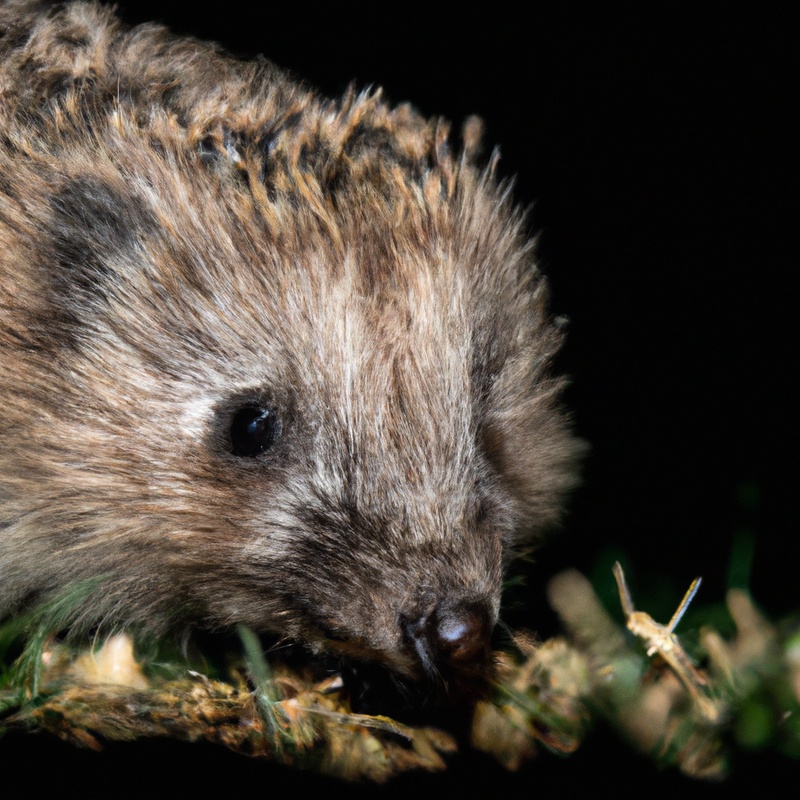What Is The Hedgehog’s Natural Habitat?
Key Takeaways:
- Hedgehogs are native to Europe, Asia, and Africa.
- They prefer living in a variety of habitats including woodlands, grasslands, and gardens.
- Hedgehogs require access to shelter, food sources, and water in their natural habitat.
- They are adaptable and can thrive in urban areas if provided with suitable conditions.
Are you curious about where hedgehogs call home? You’re in the right place! In this article, we’ll dive into the fascinating world of hedgehog habitats and explore the native range of these adorable creatures.
We’ll also uncover the common types of environments they thrive in and what factors influence their habitat selection.
And did you know that hedgehogs are quite adaptable and can even live in urban areas? Plus, we’ll touch on the importance of conserving their habitats.
If you’ve ever wondered about the natural habitat of hedgehogs, keep reading for all the answers.
| Habitat | Description |
| Woodlands | Afforested areas with trees, shrubs, and diverse vegetation where they can find shelter and food. |
| Hedgerows | Linear strips of vegetation formed by closely planted shrubs, trees, or bushes that provide safety and foraging opportunities. |
| Parks & Gardens | Urban green spaces with vegetation, including lawns, flower beds, and bushes, where hedgehogs can find food and shelter. |
| Marshes & Wetlands | Areas near water bodies, like marshes and wetlands, where they can find diverse food sources like insects, small fish, and amphibians. |
| Meadows | Grassy areas with a mix of herbs, flowers, and grasses, providing ample foraging opportunities for hedgehogs. |
| Golf Courses | Golf courses with their varied landscapes, including grassy areas, water features, and small woodlands, that provide suitable habitats for hedgehogs. |
Understanding the Hedgehog’s Natural Habitat
To understand the hedgehog’s natural habitat, it is important to consider their native range, common habitats, and the factors that influence their habitat selection.
The Native Range of Hedgehogs
Hedgehogs are native to Europe, Asia, and Africa. They are found in a wide range of habitats, including forests, grasslands, and even urban areas.
These adaptable creatures can thrive in both warm and cool climates.
They prefer areas with plenty of cover, such as dense vegetation or piles of leaves and twigs. Hedgehogs are known for their ability to curl into a ball for protection, relying on their spines as a natural defense mechanism.
Overall, their native range is quite extensive, making them a common sight in many parts of the world.

Common Habitats of Hedgehogs
Hedgehogs are adaptable creatures that can be found in a variety of habitats.
They are commonly found in grasslands, woodlands, and gardens.
These habitats provide the hedgehogs with ample sources of food, shelter, and protection.
Hedgehogs are known to build nests in areas with dense vegetation, such as hedges or shrubs.
Additionally, they can thrive in urban environments with access to gardens and parks.
It’s important to create a hedgehog-friendly habitat by providing them with safe spaces to nest and plenty of food and water.
Factors Influencing Hedgehog Habitat Selection
Hedgehogs are selective when it comes to choosing their habitat.
Several factors influence their habitat selection:
- Vegetation: Hedgehogs prefer habitats with a good coverage of shrubs, grasses, and low vegetation. These provide shelter, foraging opportunities, and protection from predators.
- Food availability: Hedgehogs look for habitats with abundant food sources such as insects, snails, slugs, and even small vertebrates. Availability of water sources is also important.
- Shelter options: Hedgehogs prefer habitats with a variety of shelter options, including dense vegetation, bushes, logs, rock piles, and underground burrows.
- Temperature and climate: Hedgehogs are more common in temperate regions, favoring habitats with a moderate climate. Extreme temperatures and harsh environments can impact their survival.
- Human activity: Hedgehogs can adapt to urban environments if they have access to suitable food, shelter, and protected spaces away from heavy human traffic.
It’s essential to consider these factors when trying to create a hedgehog-friendly habitat or when assessing the suitability of a specific area for hedgehog conservation.
Hedgehogs as Urban Dwellers
Hedgehogs are adaptable creatures and have successfully made their homes in urban areas.
They can be found in parks, gardens, and even in the outskirts of cities.
Hedgehogs are able to navigate urban environments by utilizing green spaces and adapting to the changes in their surroundings.
However, it is important for us to be mindful of the impact our urbanization has on their natural habitats and take steps to ensure their well-being.
Providing hedgehog-friendly habitats and avoiding the use of harmful pesticides and chemicals can help create a safe environment for these urban dwellers.
Conservation of Hedgehog Habitats
Conservation of Hedgehog Habitats is crucial for the survival and well-being of these adorable creatures.
Creating and maintaining suitable habitats is key to protect hedgehog populations.
Here are some essential measures:
- Preserve natural landscapes: Maintaining a diverse range of habitats, including hedgerows, grasslands, and woodlands, provides a variety of food sources and shelter for hedgehogs.
- Minimize habitat fragmentation: Connecting fragmented landscapes with wildlife corridors allows hedgehogs to move freely and access food and mates.
- Avoid using pesticides and chemicals: Harmful substances can disrupt the hedgehog’s natural habitat and directly impact their health. Opt for environmentally friendly alternatives instead.
- Provide nesting sites: Encourage the presence of hedgehogs by creating log piles, leaf piles, and brushwood stacks, which provide safe spots for nesting and hibernation.
- Promote education and awareness: Educating the public about the importance of hedgehogs and their habitat conservation can inspire people to take action and help protect these precious creatures.
By implementing these measures, we can contribute to the conservation of hedgehog habitats and ensure a brighter future for these delightful animals.
Let’s play our part in creating a safe and sustainable environment for hedgehogs to thrive.

Frequently Asked Questions about Hedgehog Habitats
1. What is the ideal habitat for a hedgehog?
Hedgehogs prefer habitats with a combination of vegetation, open space, and shelter. Gardens, woodlands, and hedgerows are their natural habitats, providing access to insects, snails, and berries for food, as well as places to hide and nest.
2. Should I provide a shelter for hedgehogs in my garden?
Yes, offering a hedgehog shelter is a great idea. You can create a simple hedgehog house using wood and branches or even use a commercially available one.
Ensure it is weatherproof and placed in a quiet area of your garden for the hedgehog’s safety and comfort.
3. What should I feed hedgehogs if they visit my garden?
Hedgehogs are insectivores, so they mainly eat insects like beetles and slugs. You can supplement their natural diet by offering them cat or dog food, mealworms, or specially formulated hedgehog food.
However, avoid giving them milk or bread, as it can cause digestive problems.
4. How can I make my garden more hedgehog-friendly?
To make your garden more welcoming to hedgehogs, create hedgehog highways by cutting small holes in fences or walls. Avoid using chemicals or pesticides in your garden, as they can harm hedgehogs and their food sources.
Also, provide a water source, such as a shallow dish, and leave leaf piles or log piles for them to explore.
5. Can hedgehogs live in urban areas?
Yes, hedgehogs can adapt to urban environments if provided with suitable habitat and food sources. By creating hedgehog-friendly gardens and raising awareness in your community, you can help protect urban hedgehog populations.
6. How should I handle a hedgehog if I find one in my garden?
If you find a hedgehog in your garden, observe it from a distance and avoid touching it unless necessary. Hedgehogs may feel threatened if handled, and they have sharp spines for defense.
If you suspect a hedgehog is injured or in distress, contact a local wildlife rescue organization for assistance.
Remember, hedgehogs are wild animals, and it’s important to respect their natural behaviors and provide them with a safe and suitable habitat in which they can thrive.
Final Verdict
Understanding the hedgehog’s natural habitat is crucial for their conservation and well-being.
Hedgehogs have a native range that encompasses various regions worldwide, including forests, grasslands, and gardens.
Factors like food availability and shelter influence their habitat selection.
Interestingly, hedgehogs have adapted to urban environments, making cities their new home.
However, it is vital to conserve their natural habitats to ensure their long-term survival.
By creating suitable habitats and raising awareness, we can contribute to the protection of these adorable creatures.
Remember, hedgehogs thrive when they have access to food, water, and shelter in a safe and undisturbed environment.








